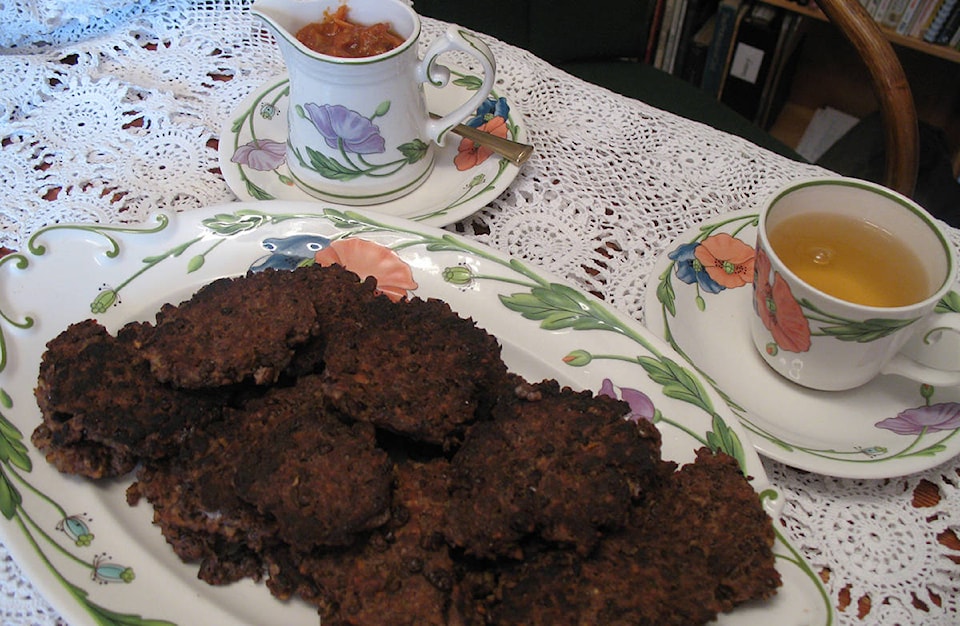By Mary Lowther
I have my doubts about birds. You feed them, make sure their water doesn’t freeze over winter, think nice thoughts about them and how do they reward all your efforts? They fly over to the neighbours’ and eat THEIR slug eggs!
I even spread their favourite seeds over my freshly dug bed to entice them to start eating and was totally ignored. They were all over the remay that I covered beds with two years ago, laboriously pecking holes to get to the seeds, but this year they have committed to dining out!
I’ll give them another week to clean up the bed and then plant my peas anyway, and keep my fingers crossed. I’ll feed the avian ingrates next winter because it’s fun to watch them eat, although it takes time away from looking after David. In the meantime I’m thinking about planning for growing foods that will provide us with protein during each of the seasons because self sufficiency dictates that a gardener must grow the widest range of nutrients she can. The best food is freshly picked, so I might as well grow complementary crops for each season.
For example, when peas and grains like brown rice are eaten together, their combined protein content nearly fulfills our daily requirement, so peas in springtime are a must. Mint starts shooting up now too and makes a delicious, vitamin rich accompaniment. When new potatoes come out in June, they’ll combine with peas for another high protein meal.
Beans and lentils in the summer join with easy to grow grains such as wheat, barley and amaranth. Flax is high in protein as well, and pairs with legumes. Ground and sprinkled on steamed green beans along with a bit of nutmeg make a tasty dish.
The protein in pumpkin, flax and sunflower seeds goes with legumes as well. Pumpkin varieties like “Lady Godiva” and “Stygian” are grown for their hull-less seeds and are good protein sources in the fall. Corn, also harvested in the fall, forms a complete protein with beans. Tortillas anyone? How about sunflower seeds mixed with lentils to make burgers? Here’s a good recipe from the Moosewood Cookbook:
Lentil-Seed Burgers
Soak and cook until tender: 1 ½ cups lentils
Dice finely: ¼ pound fresh mushrooms 1 stalk celery
1 small green pepper 1 small carrot
2 cloves garlic 1 small onion
1 cup sunflower seeds 1 T. butter and 1 T. oil
1 tsp salt black pepper to taste
1 tsp chile powder 1 tsp mustard
Saute everything but the lentils until vegetables are soft.
Add: ¼ cup oat flakes and the lentils. Mash moderately.
Add: 5 T. tomato paste
2 beaten eggs
1 to 2 dashes of Worcestershire sauce (David calls it Ottawa sauce because that’s where his sister is.) Work it out phonetically.
Mix well. The recipe that is. David is mixed up enough already. Form into flat patties and chill one hour. Broil on both sides or fry in butter or oil. Sprinkle with a little grated cheese or warmed tomato sauce.
Tell David it’s imported “faux boeuf.”
